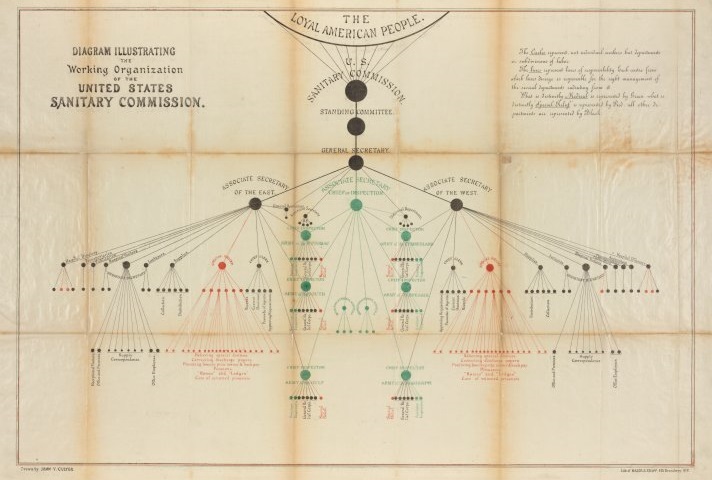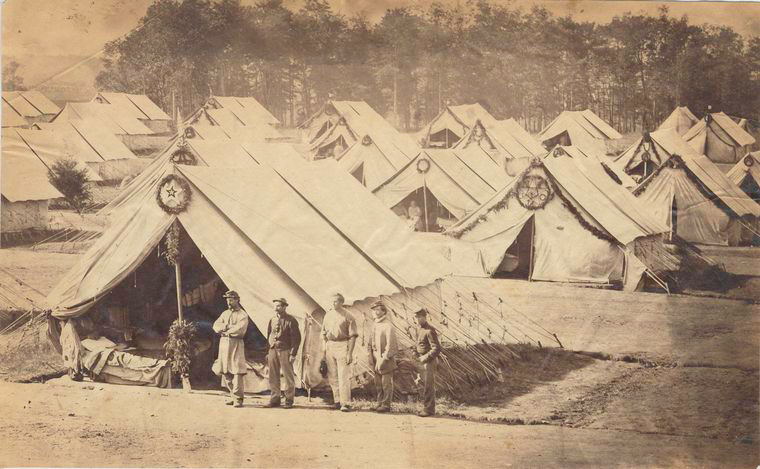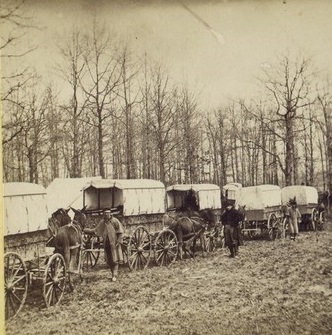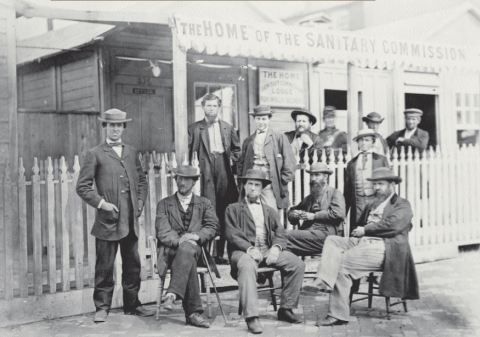For those with ancestors who served in the Civil War era, the records of the United States Sanitary Commission (USSC) - an important Civil War humanitarian organization - are an essential resource that has only recently become easily accessible. This collection is a deep and wide-ranging record of how all Americans shaped and experienced the Civil War, from civilians to soldiers.
The USSC was charged with monitoring the health and well-being of the armed forces, as well as collecting and distributing supplementary supplies donated by the American public. The collection contains materials generated by the organization between 1861 and 1879.
Simply put, this record set is massive. The New York Public Library spent three years arranging, processing and rehousing these records. When the project was completed in 2013, the final collection comprised of 20 record groups totaling nearly 1,000 linear feet of material. Due to the size and complexity of the archive, we advise researchers to spend some time learning about the collection before diving into research.
Our Winter 2014 issue of The New York Researcher featured a comprehensive guide to this collection, written by Susan P. Waide, an archivist at the Manuscripts and Archives Division of the New York Public Library who was at the forefront of the project to process these records.
We recently uploaded this article to our New York Knowledge Base - NYG&B members can access the full article here. This blog article will provide a general overview of the collection and what can be found, but we highly recommend reading the full Knowledge Base article for those who plan on diving into this enormous record set.
What was the USSC?
The United States Sanitary Commission was enacted by Congress on June 18, 1861, and given the mission of supporting sick and wounded soldiers of the U.S. Army. The core mission of the USSC was to monitor the health and well-being of the armed forces and to advise the government (the Army Medical Bureau in particular) on ways to address any deficiencies and anticipate any needs to help win the war. The organization was also responsible for raising and distributing supplementary aid funds. In the end, the USSC raised an estimated $25 million, which equates to just under $400 million in today's currency.

Manuscripts and Archives Division, The New York Public Library.
Click here for a larger version of the photo
The many branches of the USSC worked with individuals and local aid societies to collect supplies and money to supplement the well-being of those serving in the armed forces. The organization also created "special relief" services to help address the needs of soldiers and their families that fell outside of the scope of what the military would handle. One of these services was a claim agency that helped soldiers and their families file pension and other claims from with the government.
So, as you can see, the USSC generated a wide variety of records. Read on for some brief descriptions of some of the key facets of the collection.
Claim Records
Records created by the USSC claims agencies are by far the most important genealogical resource and comprise nearly one-third of the collection’s physical bulk. The office assisted Union soldiers, sailors, and their families in prosecuting claims on the federal government for pensions, back pay, bounty, commutation of rations, seamen’s prize money, and other benefits.
Many claim files include their original identifying jacket, and can contain:
- Letters from servicemen, their family members, and military officers documenting service and health conditions
- Affidavits and other documents proving marriages, births, or deaths
- Correspondence between the USSC and federal offices, and other parties.
These files are an excellent starting point for researching your Civil War soldier/sailor ancestors, but understanding USSC record keeping practice is the key to navigating the claim records. Our Knowledge Base article provides essential advice for navigating the claim records.
The Hospital Directories

Manuscripts and Archives Division, The New York Public Library.
Through its special relief services, the USSC supported servicemen who, for various reasons, were separated from their units and required immediate assistance with food, clothing, shelter, or medical care. Separation was usually due to illness, furlough, or discharge.
The USSC established soldiers’ homes (lodges providing temporary shelter and assistance) and other services at major transportation points, and in some cases sheltered female family members in search of a hospitalized soldier.
The Hospital Directory, established in 1862, collected and recorded information on the location and condition of sick and wounded soldiers in U.S. Army medical facilities - both on the home front and in war zones. This part of the USSC collection contains records that contain:
- Registers of military hospital patients (directories)
- Files on individual soldiers containing letters from soldiers’ relatives, friends, regimental officers and surgeons, and Hospital Directory staff
- Lists of deaths, burials, and prisoners of war
- Administrative correspondence and record books
A related subset of the USSC collection that will also be of interest are the camp inspection reports, which include data on a variety of subjects used to improve the health and welfare of soldiers.
The NYPL's reprocessing project provided some much-needed reorganization of these records, which are now far more easy to access than they previously were. Read our Knowledge Base article to see how the records are organized, and advice for getting the most out of this part of the collection.
Local History Resources & Women's Auxiliary Associations
The collection also documents contributions to the war effort made by citizens in local communities that might otherwise remain unknown. Women, men, and even children supported the war effort through the donation of supplies (such as foodstuffs, hospital garments and linens, mittens, and socks) and money.

Manuscripts and Archives Division
The New York Public Library.
Although the USSC used its organizational terms flexibly, a supporting “branch” organization in a large northern city usually consisted of an agency, run and staffed by men, and a women’s auxiliary association. Women’s auxiliaries collected supplies donated by Union supporters in their geographical area, working with aid societies and individuals. Women’s auxiliaries collected supplies donated by Union supporters in their geographical area, working with aid societies and individuals.
The record of a community’s contributions will be found in both correspondence and supply records and may extend outside a branch’s records to other parts of the collection. Correspondence, essentially narrative reports on local activities, often provides rich information beyond the scope of supplies contributed. Letters and reports open a window into the personal lives of the writers, tensions in village and town life, and the nature of Union support in an area, which was not always strong or universal.
The part of the USSC collection mainly contains records for branches in the Eastern U.S., California and England.
A broader geographical diversity is found in the local aid society records collected by the USSC’s Historical Bureau after the war (also a part of the NYPL's USSC collection). These records may include a financial report, a narrative of their activities, and, occasionally, original correspondence and other records, such as minutes, dating from the war.
In fact, historians (as well as genealogists) should note that this collection provides an excellent way of assessing any given community's support for the Union.
Tip of the Iceberg and Digital Resources
The above collections are among the most valuable subsets of this massive collection for genealogy researchers. However, there are is total of 20 record groups, all of which provide some level of historical and genealogical value. Our Knowledge Base article provides a comprehensive overview of the entire collection, including links to more in-depth resources on each record group.
There is also a small collection of digitized documents and photographs relating to the history and mission of the USSC. They can be browsed at the New York Public Library Digital Collections website.
We're very thankful this collection is now easily accessible at the NYPL and hope you visit to do some research soon.
